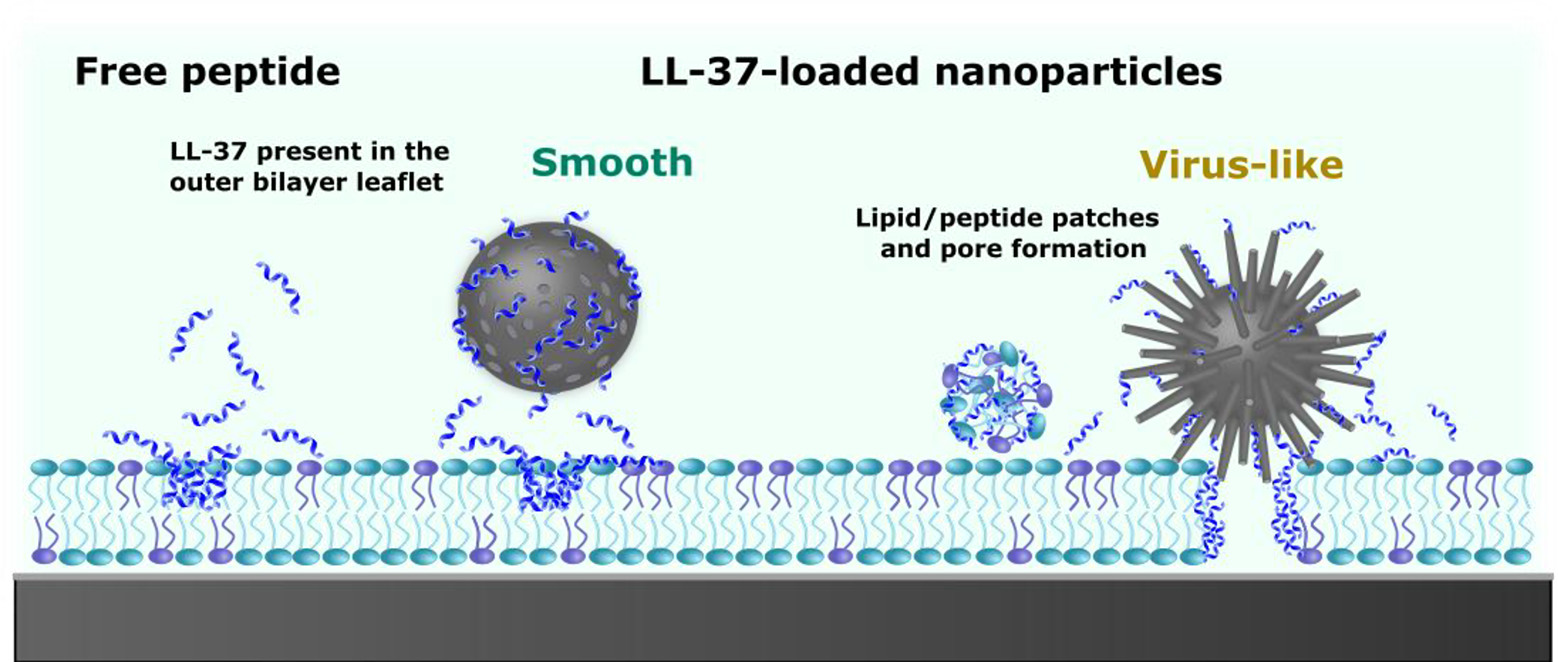With the rise of antibiotic resistance, researchers are looking for new techniques that can fight infections. One possible answer could be naturally-occurring antimicrobial peptides, AMPs, which display potent antimicrobial and anti-inflammatory effects and can be designed to destroy bacterial cells with high selectivity.
To work effectively, these AMPs must be carried and delivered to the infection site: a challenging process due to their relatively large size, positive charge and low stability in the bloodstream and tissues. This study, published in ACS Nano, looks into the feasibility of using silica nanoparticles as an AMP delivery system, and focuses on the effect of nanoparticle topography on their membrane interactions.
By using mesoporous nanoparticles, the AMPs can be loaded and released in a controlled manner, depending on the pore structure and chemistry. Furthermore, the nanometric topography, or whether the nanoparticle surface is smooth or rough, is known to have a big effect in cell attachment and adhesion. Here, the authors wanted to investigate whether this feature could be also exploited for carrying and delivering peptides.
To do this, the researchers synthesised silica nanoparticles with different surface topographies: non-porous and mesoporous nanoparticles with a smooth surface, and mesoporous nanoparticles with a spiky virus-like surface. They confirmed that spiky topographies can carry larger amounts of peptides than their smooth equivalents.

Schematic illustration of the structural effects observed by neutron reflectivity after interaction of POPC/POPG bilayers with virus-like and smooth mesoporous silica nanoparticles loaded with LL-37, as well as with free LL-37. ACS Nano 2021, XXXX, XXX, XXX-XXX
They also studied the interaction between the AMP-loaded nanoparticles and model bacterial membranes, and their antimicrobial effects. Complementing several experimental techniques, neutron reflectometry on Inter was able to reveal structural details of the nanoparticle membrane interaction: the virus-like particles loaded with peptides were much more effective at disrupting a model bacterial membrane than either smooth particles or the free AMP, enhancing AMP insertion and creating water pores.
The AMP-loaded virus-like nanoparticles were also successful in killing live E. coli bacteria. Their results indicate that delivery mechanisms of this type could be a successful route to novel anti-bacterial treatments.
Elisa Parra-Ortiz, corresponding author of this study, explains; “this work provides a mechanistic foundation for the effects of virus-like nanoparticles previously observed in cells, and proves the feasibility of using them as vehicles for antimicrobial peptides and other agents against infections."
She adds; “the outstanding capabilities of the instruments available at ISIS, together with the extremely high structural resolution and level of detail that neutrons provide on biological materials, have been crucial for this study."
Further information
The full paper can be found at DOI: 10.1021/acsnano.0c10378
